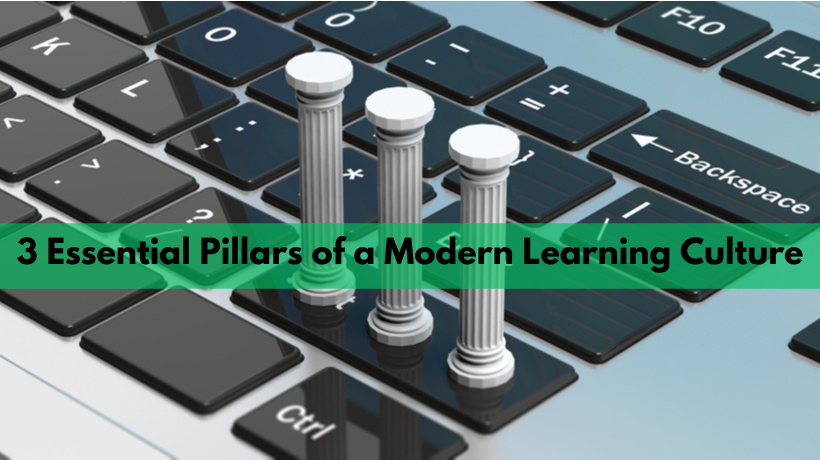3 Essential Pillars of a Modern Learning Culture
In an organisation with a learning culture, learning is embedded in all aspects of the business. This includes at individual, team, and organisational levels. It isn’t just learning for the business either, as learning for individual benefit is also embraced.
Organisations in the UAE and Saudi Arabia gain considerable benefits from establishing and then nurturing a learning culture. This includes ensuring the company has the skills it needs to stay agile, flexible, and competitive in a fast-changing, fast-paced world.
How do you establish a learning culture? Simply stating this is the approach you want to take will not deliver the change you need to achieve. Instead, a learning culture has to be built on a solid foundation. This involves:
- Establishing the learning culture ethos at all levels of the organisation.
- Ensuring learning is continuous.
- Making sure the right content is available when it is needed.
The Three Pillars of a Learning Culture
Let’s look at each of the three main pillars of a modern learning culture in more detail.
Established at All Levels
The learning and development team in an organisation is responsible for the creation of training strategies and the development of training materials. However, the leadership needed to properly build a learning culture has to come from much higher up. In fact, it has to come from the very top.
The learning culture then has to permeate through all parts of the business. It should become part of the company’s values and priorities, and it should be reinforced at every opportunity.
Doing this involves taking a long-term strategic approach to learning and development. After all, it is easy to let training priorities slip whenever time and resource pressures start to build. To sustain a learning culture over the long term, it is important everyone buys into the overall vision as articulated by the organisation’s most senior leadership.
One final point to mention is the importance of getting buy-in from the managers and supervisors who are closest to workers “on the shop floor”. A break in the chain of commitment at this level of the organisation’s hierarchy can be difficult to overcome. Therefore, it is important managers and supervisors understand the benefits of learning culture and how it will help them deliver on their responsibilities and KPIs.
Learning Should Be a Continuous Process
In a traditional workplace setting, training is a breakaway activity, where you step away from the real focus of your role to participate in a training session. You then go back to your day-to-day duties and tasks.
To establish a learning culture, training and learning should be much more integrated into the operation of the business. It should be a natural, continuous process rather than a breakaway event. This will prevent training from being a stop-start activity while also sustaining the learning culture over the long term.
There are also business and operational benefits from ensuring learning is a continuous process. After all, the shelf life of skills continues to shrink, raising the importance of developing new skills and refining existing ones even further.
Without continuous learning, the skills in your organisation will become stale and you won’t have the capabilities you will need to service your customers, remain competitive, ensure ongoing compliance, and maximise productivity.
Therefore, it is important there is an ongoing focus on sustaining and improving the learning culture once it is established. You need that initial burst of energy and activity to get it going in the first place, but commitment and energy levels then need to be sustained over the longer term.
High-Quality Content Available When Needed
The final pillar focuses on the training content that is available to people in the company. After all, you don’t want to get buy-in only to lose it because of poor quality, inaccurate, or out-of-date content.
The first step is to ensure the content is high-quality. In the modern workplace, there are high expectations when it comes to content, whether we are talking about video, animations, images, or text. Investing in high-quality content is essential as it will ensure engagement with the training itself as well as the wider learning culture within the organisation. This, in turn, will improve ROI.
It is equally important the training is available whenever learners want and/or need it. This typically involves creating a library of e-learning training courses and other materials that learners can access when it best suits them. Creating on-the-job learning opportunities and mentoring programmes can also help.
Remaining Consistent Over Time
Cultural change of any type is challenging to not just implement but sustain over the long term. It requires good leadership and communication, and it also requires consistency over time. This applies to establishing a learning culture as much as any other type of cultural change.
By taking a consistent approach to establishing and nurturing a training culture, you will improve employee satisfaction and retention rates as well as ensuring your business has the skills it needs today and in the future.
